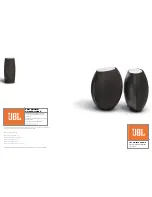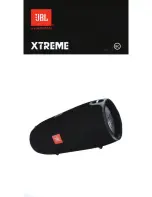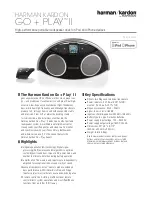
Legatia User’s Manual
©Hybrid Audio Technologies
Page 60 of 65
all the while balancing linear and non-linear distortion (non-linear harmonic distortion increases with
sound pressure level or cone displacement, and thus, crossover frequency is critical and can be
vehicle and user dependent).
As mentioned previously in “Lesson Three”, imaging cues of near-field (within 3m) sources come from
effectively two auditory methods: ITD and IID. ITD is the time it takes for sound to reach the far ear
after reaching the near ear. Typical adult male heads have an ITD maximum of approximately 400
microseconds. IID is the measure of intensity difference of the far ear as compared to the near ear.
ITD is typically used by the brain to localize low frequency sources below 500 Hz. IID is typically used
by the brain to localize high frequency sources, above 2,000 Hz. HRTF is also used in conjunction
with IID. Above approximately 4,000 Hz, the higher frequencies are attenuated by the head for the
far side ear. A sound to your left will have a different spectral content for the left ear as compared to
the right ear. The HRTF is unique for each individual (based upon shape and size of the head and
torso) but typically occurs at around 4,000-5,000 Hz. HRTF will affect the IID at even higher
frequencies, more so than simple average SPL. Above 6,000 Hz or so, the HRTF portion of IID
becomes the dominant factor. The spoken word (human voice) comprises a fundamental frequency
range of approximately 150 Hz to 6,000 Hz.
Taking the above into account, your desired crossover frequency for the Legatia midrange and/or
midbass should be one that allows the midbass or midrange to play as much of the audible spectrum
of the spoken voice to ensure point-source delivery of the tones and pinpoint image definition. In
many cases, this would be around 200-250 Hz for high pass, and around 6,000 Hz, or higher, for low
pass. In all cases, the chosen crossover frequencies should be evaluated for sonic character, while
balancing distortion and power compression at high amplitude levels.
Time Correction
It is our humble opinion that time correction should only be used in three different circumstances:
1) When the installer recognizes that a vehicle cannot image properly from both seated positions
and it seems more plausible to make the vehicle stage and image well from only one seated
position.
2) To counter the effects of group delay.
3) Time alignment between pairs of drivers.
Scenario 1
The first scenario is rather elementary. If a vehicle is too small to achieve equalized PLD’s, it doesn’t
lend itself well to equalized PLD’s, or the vehicle’s owner doesn’t wish to embark on physical
reconstruction of the car to achieve optimized PLD’s, it is a good use of time correction to make the
vehicle image well from the single seated position. It should be noted that it is Hybrid Audio’s opinion
that it is always better to improve the car mechanically and attempt to fix mechanical problems with
mechanical solutions, than it is use to electronics to fix mechanical problems. However, we realize
that there is the occasion when there is little desire to try to mechanically optimize one’s listening
space, and electronic manipulation is desired. It is important to recognize that, given the
fundamentals of ITD and IID discussed previously, time alignment is rendered virtually useless for
frequencies above approximately 2,000 Hz.
Содержание Legatia-Series
Страница 1: ...Legatia Series Component Speakers Specifications Library Car Audio Reference Guide...
Страница 12: ...Legatia User s Manual Hybrid Audio Technologies Page 12 of 65 Mechanical Drawing...
Страница 14: ...Legatia User s Manual Hybrid Audio Technologies Page 14 of 65 Frequency Response Graph...
Страница 18: ...Legatia User s Manual Hybrid Audio Technologies Page 18 of 65 Mechanical Drawing...
Страница 24: ...Legatia User s Manual Hybrid Audio Technologies Page 24 of 65 Mechanical Drawing...
Страница 30: ...Legatia User s Manual Hybrid Audio Technologies Page 30 of 65 Mechanical Drawing...
Страница 36: ...Legatia User s Manual Hybrid Audio Technologies Page 36 of 65 Mechanical Drawing...
Страница 42: ...Legatia User s Manual Hybrid Audio Technologies Page 42 of 65 Mechanical Drawing...
Страница 43: ...Legatia User s Manual Hybrid Audio Technologies Page 43 of 65 Frequency Filter Plot...
Страница 48: ...Legatia User s Manual Hybrid Audio Technologies Page 48 of 65 Mechanical Drawing...
Страница 49: ...Legatia User s Manual Hybrid Audio Technologies Page 49 of 65 Frequency Filter Plot...






































